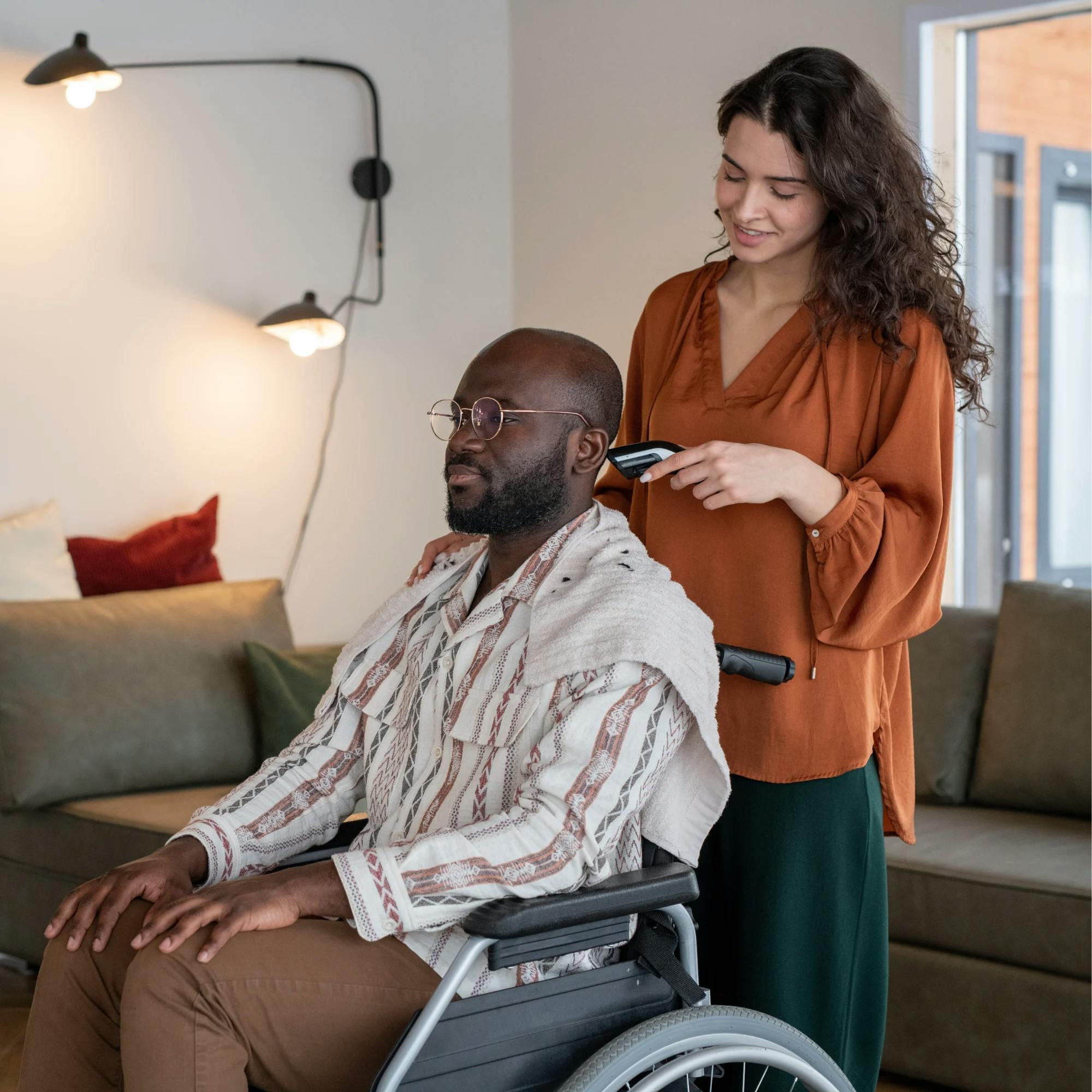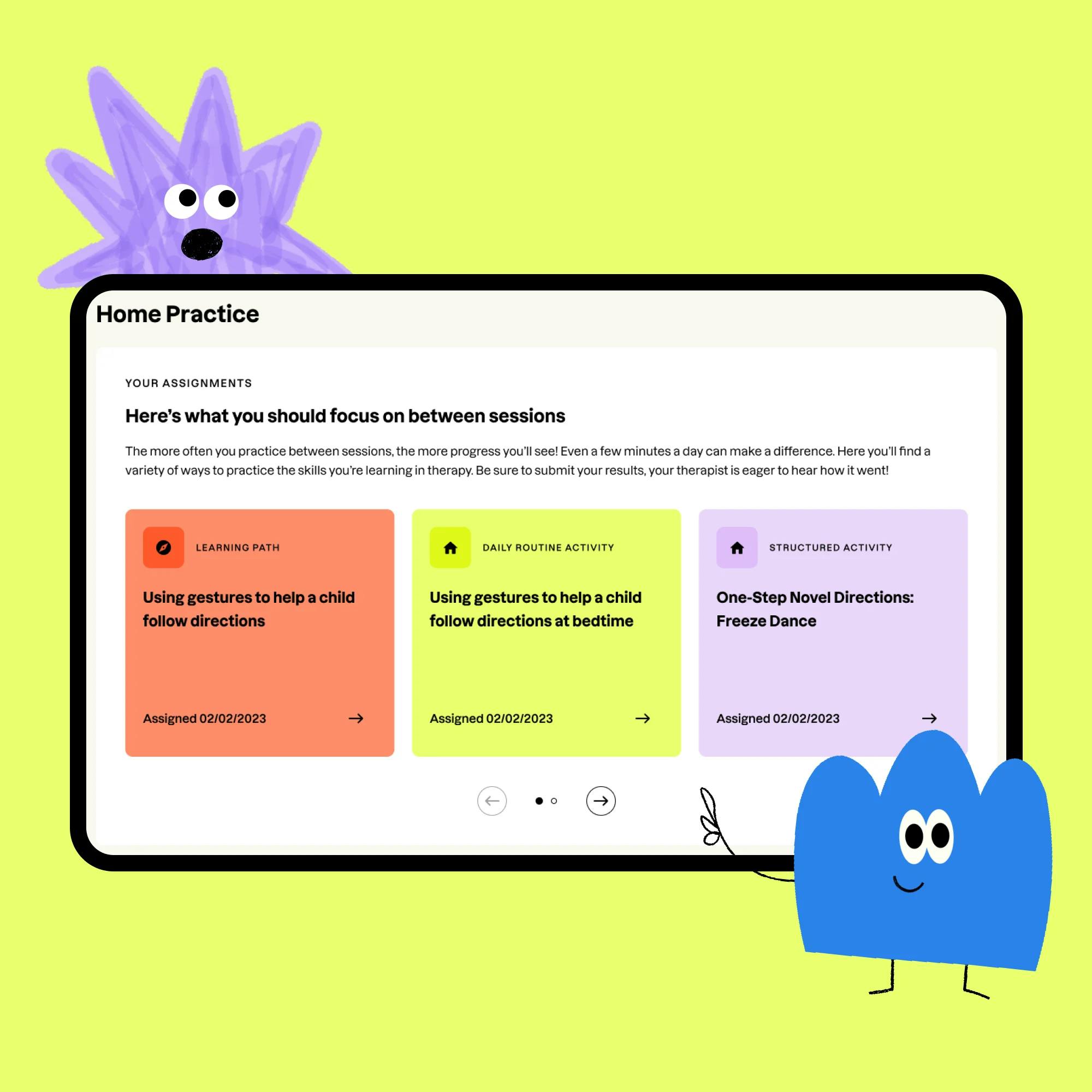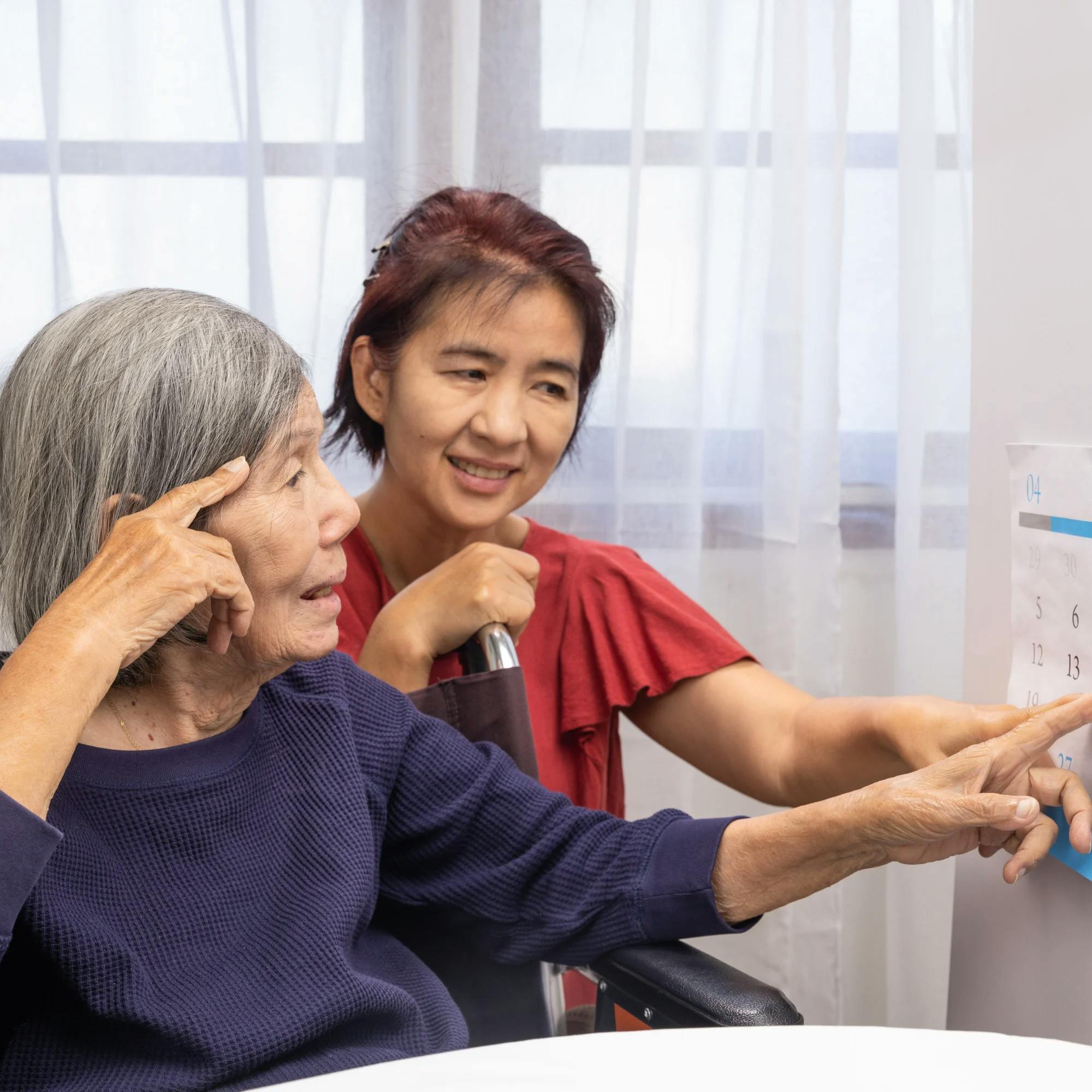At Expressable, we often work with individuals and families affected by aphasia, a language disorder that can make it hard to speak, understand, read, or write. One of the most common questions we hear is, “How do I help my loved one when words don’t come easily?”
Aphasia symptoms can vary from person to person. Some people may have trouble getting words out, which is called expressive aphasia. Others may struggle to understand what’s being said. Some may experience a mix of both. Aphasia can happen after a stroke, brain injury, or as part of conditions like dementia. Common types of aphasia include Broca’s aphasia, Wernicke’s aphasia, and global aphasia.
Watching a loved one face these challenges can be emotional and overwhelming. But here’s the good news: There are aphasia treatments and practical strategies that can make communication easier and help rebuild the person’s confidence, too.
We created this guide to help you better understand aphasia. In it, we answer common questions, explain the different types of aphasia, and walk through how aphasia is evaluated, diagnosed, and treated. Whether you have aphasia or are a caregiver, spouse, or friend, you’re in the right place.
Expert support for aphasia
Speech therapy helps people with aphasia express themselves and connect with others. Our therapists work with you from the comfort of home.
 Get started
Get startedWhat is aphasia?
As you may know, our brains have two sides: the left side and the right side. Language skills are usually controlled by the left side of the brain. When parts of this area are damaged, it can affect a person’s ability to use language.
Aphasia is a language disorder that happens when this part of the brain is injured. Aphasia can make it hard for a person to speak (called expressive aphasia), understand others, read, or write. The severity of aphasia can vary quite a bit. Some people may find it very difficult to communicate, while others may only have mild trouble.
People with aphasia aren’t any less intelligent than they were before; they just have trouble sharing what they’re thinking.
In some cases, aphasia affects just one part of language, such as putting words into sentences or remembering the names of people and things. But more often, it impacts several areas of communication. It may be hard for people to talk with loved ones, do everyday tasks, stay socially connected, or work.
It’s important to know that people with aphasia are not any less intelligent than they were before. Their thoughts and ideas are still there; they just have trouble finding the right words or sharing what they’re thinking. With the right support, people with aphasia can still communicate and live meaningful, connected lives.


What are the different types of aphasia?
Different parts of the brain help us with different parts of language. Over time, researchers have learned that certain types of speech and language problems match up with specific areas of brain damage. Below are a few common types of aphasia and the symptoms they can cause.
Wernicke's aphasia
Wernicke’s aphasia happens when there is damage to the temporal lobe of the brain. People with this type of aphasia usually have trouble understanding what others are saying. They can often speak in full sentences, but their words may not make sense. They might use made-up words or add extra words that confuse the message. Many people with Wernicke’s aphasia don’t realize their speech is hard to follow, which can make communication challenging for both the speaker and the listener.


Broca’s aphasia
Broca’s aphasia is linked to damage in the frontal lobe of the brain. This type of aphasia affects how a person puts words together to form clear, complete sentences. People with Broca’s aphasia often speak in short phrases and may have to work hard to get words out. They may leave out small words like “is,” “the,” or “and.” Even though their speech is limited, they usually understand what others are saying fairly well.


Global aphasia
Global aphasia is the most severe form of aphasia. It happens when there is major damage to the brain’s language areas. People with global aphasia often have serious trouble communicating. They may only be able to say a few words or phrases, have trouble understanding others, and be unable to read or write. Some people with global aphasia may repeat the same words or sounds over and over.


There are also other types of aphasia, including:
A doctor or speech-language pathologist can diagnose the type of aphasia a person has and create a treatment plan that’s right for them.
How is aphasia different from other speech problems?
Aphasia, dysarthria, and apraxia of speech are all conditions that can make it hard to speak or communicate. However, they affect the brain and body in different ways:
Aphasia is a language problem. It affects how a person understands and uses words. As we’ve mentioned, people with aphasia may have trouble speaking, understanding others, reading, or writing. Aphasia usually happens after damage to the brain’s language areas, often from a stroke.
Dysarthria is a muscle problem. It happens when the muscles used for talking are weak or hard to control. The person knows what they want to say, but their speech may sound slurred, slow, or too soft because their muscles can’t move well.
Apraxia of speech is a movement planning problem. The brain has trouble sending the right signals to the muscles needed for speech. The muscles are not weak, but the person can’t move them in the right way to say sounds or words clearly. This makes speech sound broken or jumbled.


How common is aphasia?
Even though many people have never heard of aphasia, it is actually more common than you might think. According to the National Aphasia Association, about two million Americans are living with aphasia. Each year, nearly 180,000 more people are diagnosed.
This means aphasia is more common than Parkinson’s disease, cerebral palsy, or muscular dystrophy.
What causes aphasia?
Aphasia happens when parts of the brain that control language are damaged. The most common cause of aphasia is a stroke. In fact, about 25% to 40% of stroke survivors develop aphasia.
But aphasia isn’t caused only by strokes. It can also happen after head injuries, brain tumors, or brain diseases like dementia or Alzheimer’s disease.
Sometimes, aphasia happens suddenly, like after a stroke or head injury. Other times, it develops slowly over time, such as with a brain tumor or a neurological disorder.


What are common symptoms of aphasia?
The symptoms of aphasia can vary depending on which parts of the brain are affected and how severe the damage is. Aphasia can impact how a person talks, understands language, reads, and writes.
According to the American Speech-Language-Hearing Association (ASHA), here are some of the most common ways aphasia can affect communication:
Talking
Trouble thinking of the right words to say
Using the wrong words or leaving words out
Saying related but incorrect words (for example, saying “steak” instead of “hamburger”)
Mixing up sounds in words (like saying “bean green” instead of “green bean”)
Making up words that don’t exist
Speaking in short phrases instead of full sentences
Saying sentences that include both real and made-up words


Understanding
Difficulty understanding what people are saying, especially when someone talks fast, uses long or complex sentences, speaks in a noisy room, or talks in a group
Trouble understanding jokes or figurative language
Reading and writing
Difficulty reading words in books, newspapers, signs, or on screens
Trouble spelling or writing sentences
Problems using numbers or doing math
Problems telling time

How is aphasia diagnosed?
Aphasia is often first noticed by a doctor or healthcare provider treating someone after a brain injury. To find out which part of the brain is affected, doctors may use imaging tests like magnetic resonance imaging (MRI) or a computed tomography scan (CT).
If a doctor suspects aphasia, they will usually test the person’s speech and language skills. This includes looking at how well the person can speak, understand language, answer questions, and have a conversation.
In many cases, the doctor will refer the person to a speech-language pathologist, also known as a speech therapist. Speech therapists are trained to evaluate, diagnose, and treat communication problems, including those caused by aphasia.
At Expressable, we match each client with a licensed speech therapist who’s trained to evaluate and treat aphasia. Speech therapy begins with a comprehensive evaluation. This may include looking at your ability to understand directions, express your thoughts and needs, and read and write. Your therapist may use standardized tests to get a clearer picture of your strengths and challenges. Based on this information, they’ll develop a personalized care plan that’s built around your unique needs and goals.
We typically recommend two speech therapy sessions per week for aphasia, but this can vary depending on your progress and availability. Your speech therapist will explain what to expect and keep you updated throughout your journey.
Get matched with a speech therapist who's right for you
Get started nowHow is aphasia treated?
Some people see natural improvements in their communication during the first few months after a brain injury, even without treatment. However, many continue to have symptoms long after this recovery period. How much progress someone makes can depend on the cause and extent of the brain damage, as well as their age and overall health.
Speech therapy is often an important part of recovery. It can help people regain language skills, improve how they express themselves, and better understand others. Speech therapists focus on helping individuals use their current abilities to communicate more clearly and confidently.
For those with more severe aphasia, speech therapists may also teach different ways to communicate. This might include using hand gestures, writing, pointing to letters or pictures, or using electronic tools or apps. These are called augmentative and alternative communication (AAC) methods.


Online speech therapy for aphasia
At Expressable, all therapy takes place online, through live video sessions. That means you can get the care you need from the comfort of your own home. You’re welcome to attend sessions on your own, but caregivers and family members are also encouraged to join. They can do this alongside you, or from their own home or workplace. This helps your loved ones learn strategies to support you outside of therapy.
Beyond the convenience and flexibility, research shows that teletherapy for aphasia works just as well as in-person speech therapy.


What speech therapy for aphasia includes
Your speech therapist will build treatment around your goals, daily routines, and communication needs. Therapy focuses on improving quality of life through meaningful, everyday communication. Expressable speech therapists use evidence-based techniques, such as Oral Reading for Language in Aphasia (ORLA) and the Sentence Production Program for Aphasia (SPPA), and work closely with clients and caregivers to provide the tools they need to communicate confidently.
While every person’s therapy plan is different, here are some of the common areas we work on:
Building on current communication skills: We’ll focus on what you can do right now to express yourself and understand others, then work toward more complex communication over time.
Improving functional language skills: Therapy may focus on tasks like reading medication labels, understanding emails, or answering the phone.
Helping communication partners: Caregivers and loved ones are taught techniques that support communication at home, such as how to ask clear questions, give extra time, or use visual cues.
Your therapist will use restorative exercises (aimed at regaining skills) and compensatory strategies (using different methods to communicate).
Depending on your needs, a session might involve:
Practicing naming items in pictures
Repeating target words and phrases
Sorting words by their meanings
Rehearsing common conversations, such as making a phone call or ordering food


Support beyond sessions: The Expressable portal
Your speech therapy doesn’t stop when the session ends. At Expressable, you and your loved ones will get access to our client portal, which makes practicing communication strategies easier and more effective. Here’s what you’ll find:
Learning Paths that explain and reinforce therapy strategies, like using visual cues or altering your environment to improve communication.
Demo videos that show real techniques in action, including how caregivers can support communication.
Home practice activities you can do during your everyday routine, such as reading aloud, describing pictures, or practicing conversation skills with a partner.
Text messaging support so you can ask questions, get reminders, or receive tips from your therapist between sessions.
By using the tools in the portal and practicing regularly, you can make faster progress and build more independence in your communication.


How do I speak to someone with aphasia?
If you're a caregiver, spouse, parent, family member, or friend of someone with aphasia, the tips below can help make conversations easier and more meaningful for both of you.
Use short and simple sentences that are easy to follow.
Speak slowly and clearly. Keep your voice at a steady, natural volume.
Give the person plenty of time to respond. Try not to rush or pressure them.
Limit distractions like the TV, music, or background noise when talking.
Use visuals when you communicate. Point, gesture, and keep eye contact when possible.
Ask simple yes-or-no questions instead of open-ended ones. These are often easier to answer.
If the person is having trouble finding a word, don’t jump in right away. Instead, gently help by asking them to describe the word, think of a word that’s similar, or say the first sound of the word. They could also try writing it down.


Get started with Expressable
Speech therapy helps people with aphasia express themselves and connect with others. Find the right speech therapist for the support you or your loved one needs. Start our simple sign-up here!
How Expressable Can Help
Concerned your child isn't reaching age-expected milestones? Looking for communication support from a professional? Expressable is a national online speech therapy practice serving children and adults. We treat all major areas of communication and feeding, offer flexible hours including evenings and weekends, and accept most major health insurance plans. We’re proud to have earned more than 3,000 5-star reviews from our clients (4.9/5 average).
Our therapy model is centered on parent and caregiver involvement. Research proves that empowering caregivers to participate in their loved one’s therapy leads to better outcomes. That’s why we combine live, 1-on-1 speech therapy with personalized education and home practice activities for faster progress.
Communication is more than words. It’s how we share how we feel and show who we are. We’re here to help you or your child do just that.

 Alexis Irazoque, M.S., CCC-SLP
Alexis Irazoque, M.S., CCC-SLP






